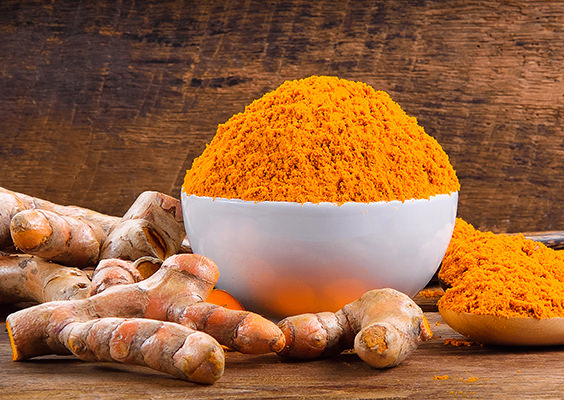News
Turmeric and Diabetes: 10 Ways Turmeric Can Help
Update: 11/21/2017Turmeric has been used for centuries in Ayurvedic (Indian) and Chinese medicine. They give it for pain relief, improved digestion and liver function, and for its antioxidant and anti-inflammatory properties.
Curcumin may also help treat aspects of diabetes, both Type 1 and Type 2. A scientific paper from the Beijing University of Chinese Medicine and McGill University reviewed multiple studies of curcumin from around the world. Most of these are studies of diabetic rats and mice. They need to be repeated in humans to gain scientific acceptance, but I’m convinced.
• In many of these studies, curcumin reduced blood sugar and cholesterol levels.
In addition:
• Curcumin prevented liver fat accumulation. Rats who consumed curcumin had reduced liver fat on a high-fat diet compared to rats not consuming curcumin.
• Curcumin suppressed the activities of white blood cells called macrophages that cause inflammation. This action of turmeric/curcumin could potentially slow down many complications of diabetes, in which inflammation plays a role.
• Curcumin improves insulin function. It reduces insulin resistance by helping insulin get into cells, perhaps on the AMPK pathway that exercise also opens up.

in a study of 240 people in Thailand, curcumin prevented prediabetes from progressing to diabetes. Roughly 16% of the 116 people on placebo (inactive treatment) progressed to Type 2 diabetes within nine months. Nobody in the group receiving 250 milligrams daily of “curcuminoids” from supplements progressed.
In a rat version of Type 1, a derivative of curcumin nearly completely reversed the disease over ten months. Islet cells regrew, and insulin levels increased.
• Curcumin protects beta cells, which produce insulin. Studies found that beta cells grew faster and lived longer in rats who consumed curcumin.
• Curcumin supports kidneys. It promotes clearance of creatinine and urea from the blood, which is what kidneys are supposed to do.
• Curcumin fights cancer. According to Cancer Research UK, “It seems to be able to kill cancer cells and prevent more from growing. It has the strongest effects on breast cancer, bowel cancer, stomach cancer, and skin cancer cells.”
• Curcumin improved erection function in rats who had “diabetes-induced erectile dysfunction.” It apparently did this by increasing blood flow to their genitals.
• Curcumin speeded stomach emptying in rats. It improved digestion. This could potentially be a valuable treatment for those with the complication called “gastroparesis,” which we wrote about here.
• Curcumin is an “antioxidant.” Oxygen is needed for life. However, oxygen also corrodes things, as you can see when iron rusts into ferric oxide. Molecules called ROS (reactive oxygen species) can “rust” blood vessels and organs. In some studies, curcumin was found to “scavenge” ROS from the body, thus protecting healthy cells from oxidation.

Turmeric, curcumin, cumin, and curry
What’s the best way to get the benefits of curcumin? It can get confusing.
Turmeric is a root, sold whole or ground up. You can use it to cook with, sprinkle it on food, or buy it in capsules.
Curcumin is the much-studied “active ingredient” in turmeric. Many sellers use the terms “curcumin” and “turmeric” to mean the same thing.
Cumin is a different thing altogether, a spice made from the seeds of a flowering plant. It has no curcumin, but does have antioxidant effects of its own.
Curry powder often contains turmeric, cumin, and other seasonings. If you like the taste, it might be a good way to get your curcumin dose.
Curcumin is poorly absorbed
Curcumin has the disadvantage of being hard for the body to absorb. You don’t get much of it, and it’s quickly cleared from the body.
One reason curry powder is so healthy is that it often contains black pepper. Black pepper contains a chemical called piperinethat keeps curcumin in the blood longer. You can also buy turmeric/curcumin capsules that include piperine.
You can cook delicious food with turmeric powder. The website Kitchn suggests adding it to egg scrambles, vegetables, rice, soups, smoothies, or making a tea with milk and honey.
You can make your own curry powder with recipes like these. I can see the advantage of making your own, starting with whole turmeric root, because then you’ll know what you’re getting and can make it more or less spicy for your taste.
You will have to ask to find out what ingredients a particular curry powder or turmeric capsule contains. If you buy capsules, the supplement website Smarter Reviews says the top ingredient on the label should be “pure turmeric curcumin.” Some capsules are full of fillers and don’t have much curcumin at all.
Vani Hari, the “Food Babe,” says “buy organic high-quality ground turmeric or fresh turmeric root from the produce section,” not some random powder in a bottle.
The prices of capsules vary dramatically. I saw prices online ranging from $8.00 for 100 capsules up to $45 for 60 capsules. I’m sure quality varies sharply as well.
This could be a healing cooking adventure for you. I hope you will try more turmeric in food, or take the capsules (after checking with your doctor) and let us know how it goes.
follow https://www.diabetesselfmanagement.com/blog/turmeric-diabetes-10-ways-turmeric-can-help/












